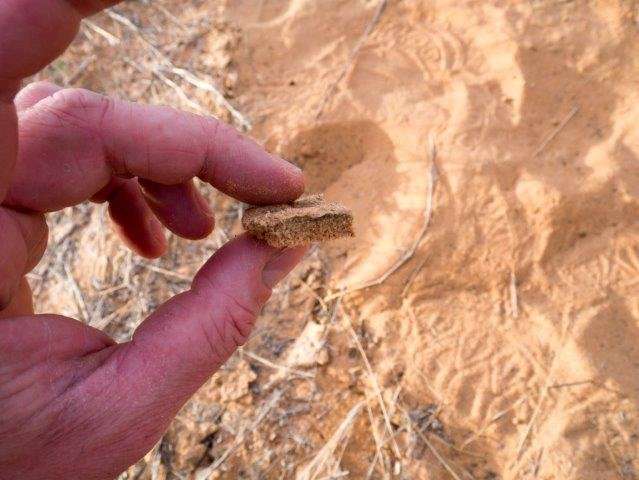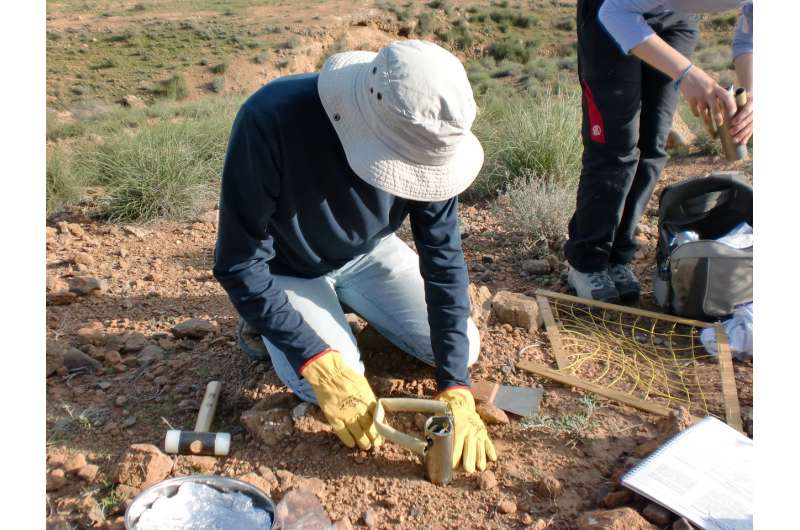What makes soil, soil? Researchers find hidden clues in DNA

Ever wondered what makes a soil, soil? And could soil from the Amazon rainforest really be the same as soil from your garden?
Researchers at the Netherlands Institute of Ecology (NIOO-KNAW) and The University of Manchester, UK, are using DNA sequencing to unlock the secrets of the world's different soils and, for the first time, analysing ecological patterns and microbial communities on a global scale.
The research team, made up of 36 scientists from around the world, collated and analysed data on soil bacteria from 21 different countries. In all they looked at over 1900 soils, containing over 8000 bacterial groups.
The study, which is published in Nature Microbiology today, gives new insight into the bacteria that make a soil a soil, and how our soils are functioning and responding to global challenges, such as climate change.
The research found that some groups of bacteria always show up in soil, no matter where it is collected from on the planet. No matter if that is in a field in the UK or the forest floor in the Amazon rainforest - they are constant. But other bacteria are pickier, and those are the ones we should pay attention to say the researchers. That's because these bacteria could hold clues to what makes some soils more fertile and excellent for planting crops when compared to others.

Dr Kelly Ramirez, from NIOO-KNAW, explains: "When we see a cactus, we know we are in a desert, when we see a palm tree we know we are in the tropics, and when we see a grass we could be almost anywhere. This same idea, that species indicate a habitat, is true for soils, but instead of using plants we use soil bacteria. But if you were to pick up a handful of soil from your garden, from a forest, or even a meadow it would probably be hard to tell the difference."
However, the microbial communities that live within the world's soils are more diverse and contain more individuals than any other species groups on the planet, and can tell us a lot about a their origins.
Dr Franciska de Vries, from The University of Manchester's School of Earth and Environmental Sciences (SEES), added: "In the soil these bacteria help plants grow, cycle carbon and keep our ecosystems functioning. Scientists all over the world are studying these important bacteria, but they are all using different techniques and keeping all the information organized is a challenge. So we decided to try and find a way to consolidate all the research and bring it together."
That is when Dr Chris Knight, also from SEES and the paper's co-author, brought his expertise to the study. An expert in microbial and computational modelling, he used a specific technique that could accommodate thousands of bacterial species. The 'machine learning' method allowed the team to evaluate all the species and match them to different environmental factors and to each other.
Dr Knight added: "What resulted was a new and clearer picture of the roles of particular groups of bacteria in shaping communities of soil bacteria. Some bacteria are common, but how many turn up in any particular soil has more to do with the details of how they were measured than any real differences among soils. Some are so rare that you only ever see them in a handful of soils of any sort, which doesn't say much. But in between there are informative families of bacteria that indicate real differences among types of soil."
More information: Kelly S. Ramirez et al, Detecting macroecological patterns in bacterial communities across independent studies of global soils, Nature Microbiology (2017). DOI: 10.1038/s41564-017-0062-x
Journal information: Nature Microbiology
Provided by University of Manchester

















